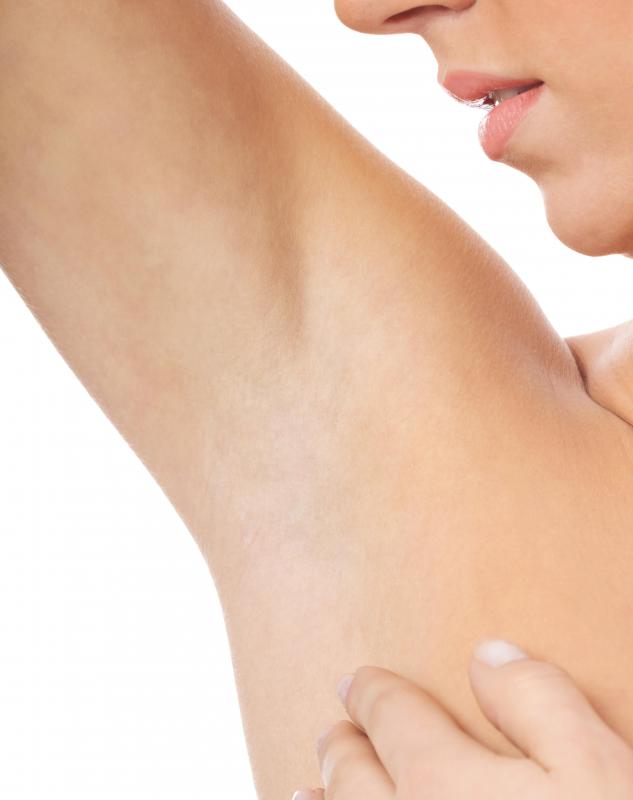At WiseGEEK, we're committed to delivering accurate, trustworthy information. Our expert-authored content is rigorously fact-checked and sourced from credible authorities. Discover how we uphold the highest standards in providing you with reliable knowledge.
What is Hydradenitis?
Hydradenitis suppurativa is a disease that develops in apocrine sweat gland follicles, causing sweat gland inflammation that can lead to scarring. These glands are located under the arms, under the breasts and on the inner thighs, the groin and the perianal area. This disease, which is considered a severe type of acne, is commonly known as hydradenitis or hidradenitis.
For most people with this skin disease, the first symptoms appear after puberty. This is because it is after puberty begins that the apocrine glands begin to develop and mature. Hydradenitis is more common in women and is most likely to develop in people who are in their 20s. For women, the most common sites of inflammation are the underarm and underbreast regions. For men, the perianal region is a more common site for the disease to develop.

Symptoms of hydradenitis develop when sweat gland follicles become clogged with skin oils, dead skin cells and other material that builds up on the skin. These substances can trigger inflammation when they become embedded in follicles. If bacteria are present in the material embedded in the follicles, infection also can develop. The underlying factors that make some people susceptible to this disease are unknown, but causative factors might include smoking, hormone levels and genetics.

Lesions begin as pitted areas of skin in which blackheads are prominent. The blackheads can develop into tender, raised pus-filled lumps. As the lumps grow in size, they eventually break open, allowing the pus to drain. In some cases, lumps grow under the skin without breaking open. These can remain under the skin for months or years and can become extremely painful. The lesions also can take a third form, that of slow-healing open sores that can cause extensive scarring.

Mild, isolated episodes of hydradenitis can be treated effectively at home. Swelling can be reduced and pain eased with the application of a heating pad or hot compress. Loose-fitting clothing helps prevent further skin irritation. Keeping the affected area of skin clean and dry also is important. The skin can be washed regularly with anti-bacterial soap to reduce the chances of infection, and it should be dried thoroughly afterward.

More severe cases require medical treatment. For example, if lesions take longer than two weeks to heal, are present in multiple locations or recur often, medical treatment is necessary to help manage the condition. Medications such as antibiotics and non-steroidal anti-inflammatory drugs are used to help heal the infection, reduce swelling and manage pain. In very severe cases, corticosteroids might be used to suppress the inflammation.

If lesions are very deep or do not respond to this treatment, surgical treatment might be necessary. Deep, pus-filled lesions can be surgically drained to reduce swelling and pain, but this measure is useful only for treating a small area of skin and won’t prevent further lesions from forming. Extensive, severe areas of diseased skin can be entirely excised and replaced with grafted skin from unaffected areas. Even this more drastic treatment, however, cannot prevent a recurrence of hydradenitis in other areas where sweat glands are located.
AS FEATURED ON:
AS FEATURED ON:















Discuss this Article
Post your comments